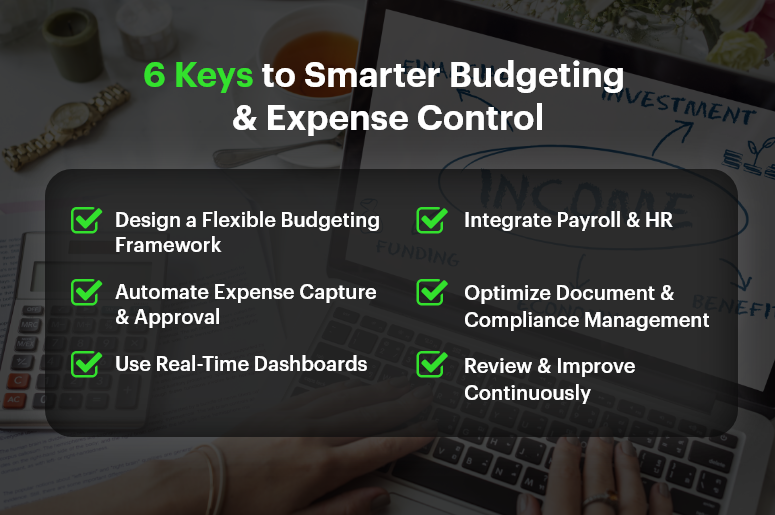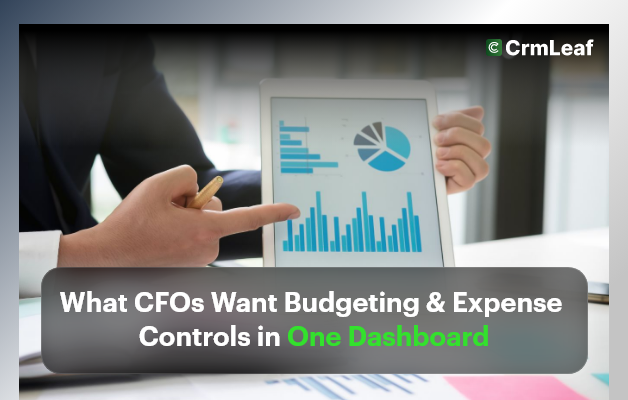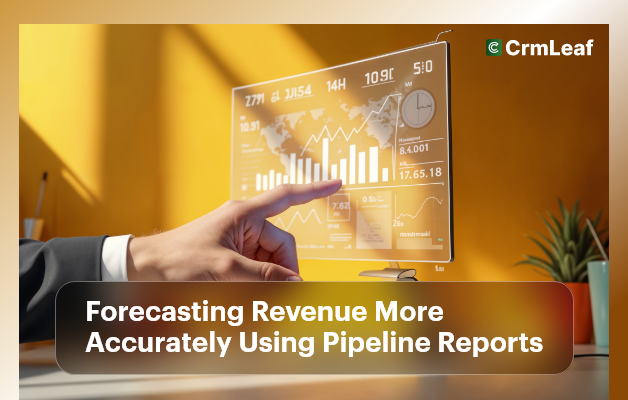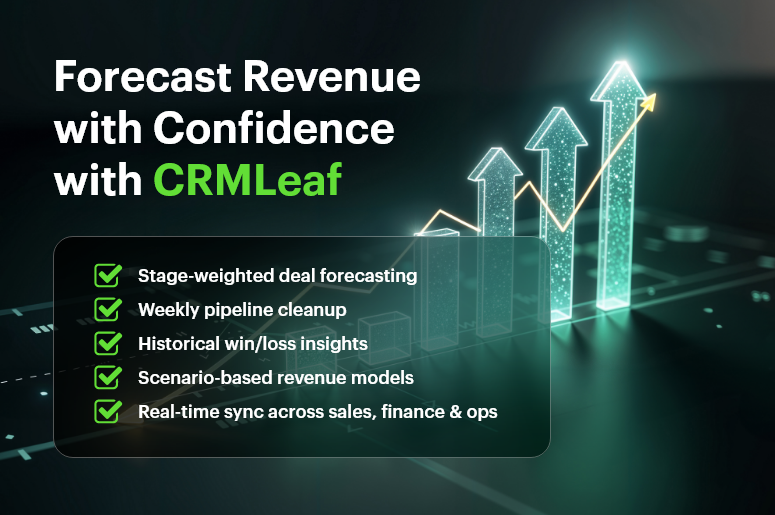While revenue often steals the spotlight, budgeting and expense controls are what keep businesses afloat during downturns. CFOs today need more than spreadsheets — they need real-time, centralized dashboards that offer clarity, control, and confidence.
According to a report by PwC, 73% of CFOs say real-time visibility into financial performance is essential—yet many still rely on outdated or siloed systems.
In this blog, we’ll break down exactly what CFOs want: a single dashboard where budgeting, forecasting, and expense management all connect. We’ll also explore how an integrated CRM + ERP platform like CRMLeaf makes it possible for finance leaders to act faster and smarter.

Business Need & Importance
Why Budgeting and Expense Controls Are CFO Priorities
For growing businesses, budgeting and expense controls are more than financial hygiene — they’re strategic weapons. When finance teams have full visibility into how money flows in and out, they can make faster decisions, prevent overruns, and allocate resources more effectively.
Disconnected systems make it hard to:
- Track budgets in real-time
- Link departmental expenses to project outcomes
- Control discretionary spending
- Ensure compliance with internal and external policies
And it’s not just finance teams that suffer. Department heads, project managers, and operations leaders also struggle without a unified view of budget vs. actuals.
Real Scenarios Across Industries
- Professional Services: Without project-level budget visibility, consulting firms often overspend on client deliverables.
- Retail Chains: Decentralized spending on marketing and store ops leads to bloated, untraceable expenses.
- Manufacturing: Unchecked procurement costs and unpredictable vendor billing make cost control nearly impossible.
With budgeting and expense controls centralized in one dashboard, these industries — and many others — gain the financial clarity they need to scale efficiently.
Best Practices & Actionable Tips
How to Get Budgeting & Expense Controls Right
Below are proven best practices that help CFOs and finance teams take control:
1. Implement a Unified Financial
Dashboard ring budgets, forecasts, expenses, and approvals into one visual dashboard. This eliminates toggling between tools and gives CFOs a high-level snapshot of financial health — across departments, projects, and timelines.
2. Set Role-Based Access for Better Governance
Ensure that each user sees only what they need to. CFOs can view full company budgets, while team leads can access only their departmental data — maintaining control without slowing down execution.
3. Automate Budget Allocation and Monitoring
Assign budgets to teams or projects and track spending in real time. With alerts for overspending or unusual patterns, finance teams can act before small issues become big problems.
4. Link Expense Tracking with Project & CRM Data
Integrate expense entries with customer or project records in your CRM + ERP. This helps correlate spending with revenue-generating activities and improves ROI tracking across teams.
5. Establish Pre-Approval Workflows for High-Value Expenses
Set up automated workflows that route large expense requests through proper approval channels. This reduces risk, enforces accountability, and maintains transparency across the organization.
6. Use Real-Time Data for Forecasting and Adjustments
Don’t wait until month-end reports — act in the moment. Real-time budget data allows CFOs to reallocate resources or adjust forecasts based on evolving business conditions.
7. Conduct Budget vs. Actual Analysis Monthly
Compare planned vs. actual spending regularly, not just quarterly. This reveals patterns, helps spot inefficiencies, and makes it easier to optimize financial planning over time.
8. Centralize Vendor & Procurement Data
Track vendor contracts, invoices, and payment cycles inside the dashboard. This avoids duplicate payments, tracks outstanding liabilities, and ensures procurement aligns with budgets.
9. Connect CRM + ERP + HRMS Systems
Unifying your business systems means all financial data flows from a single source of truth. HR costs, sales commissions, project expenses, and marketing spend — all become visible in context.
10. Enable Mobile Access for On-the-Go Reviews
Give CFOs and department heads access to dashboards on mobile. Approvals, alerts, and insights should not be tied to a desktop.
Customer Success
For example, ElevateTech, a 200-employee SaaS company, adopted CRMLeaf’s budgeting and expense controls dashboard to streamline finance operations.
Before using CRMLeaf, their finance team spent over 20 hours per month consolidating budget reports from different departments. Expense approvals were delayed, and forecasting accuracy was below 60%.
After switching to CRMLeaf:
- Budget variance dropped by 40% in just two quarters
- Expense approvals were completed 3x faster
- Forecast accuracy improved from 60% to 87%
With a single source of truth, the CFO now makes faster decisions with confidence — and the finance team focuses more on strategy than spreadsheets.
Key Takeaways
Budgeting and expense controls no longer need to be clunky, reactive, or fragmented. Modern CFOs demand more — and rightly so.
With a unified dashboard through CRMLeaf’s CRM + ERP platform, you can:
- See real-time financial data across departments
- Control costs proactively, not reactively
- Drive accurate forecasts and faster approvals
The result? Stronger margins, leaner operations, and smarter decisions.


